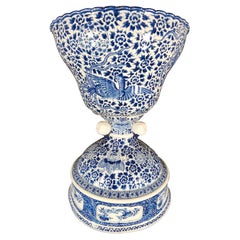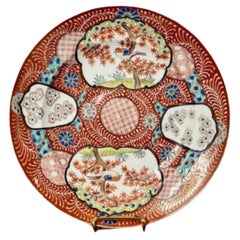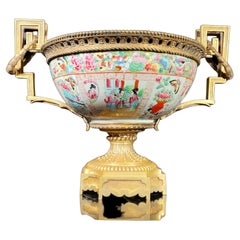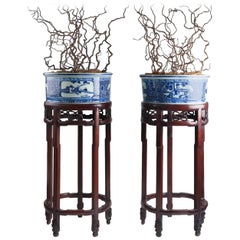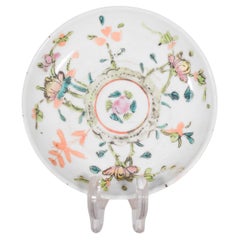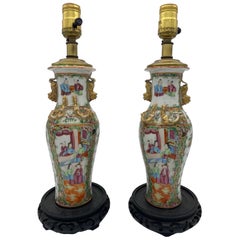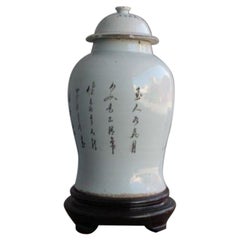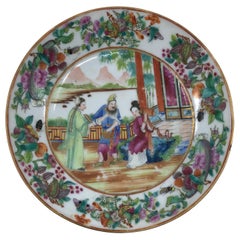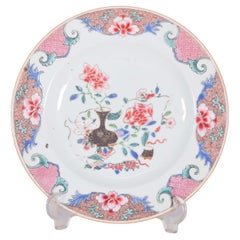Antique Chinese Porcelain
19th Century Chinese Chinese Export Antique Chinese Porcelain
Porcelain
Early 20th Century Chinese Antique Chinese Porcelain
Porcelain
Late 19th Century Antique Chinese Porcelain
Porcelain
1920s Chinese Antique Chinese Porcelain
Porcelain
Mid-19th Century Chinese Baroque Antique Chinese Porcelain
Porcelain
19th Century Chinese Qing Antique Chinese Porcelain
Porcelain
19th Century Chinese Antique Chinese Porcelain
Porcelain
Early 19th Century Chinese Chinoiserie Antique Chinese Porcelain
Porcelain
Mid-19th Century Chinese Baroque Antique Chinese Porcelain
Porcelain
Late 19th Century Chinese Chinese Export Antique Chinese Porcelain
Ormolu
Mid-19th Century Chinese Baroque Antique Chinese Porcelain
Porcelain
Mid-18th Century Chinese Rococo Antique Chinese Porcelain
Porcelain
Mid-19th Century Chinese Baroque Antique Chinese Porcelain
Porcelain
Early 20th Century Chinese Baroque Antique Chinese Porcelain
Porcelain
Mid-19th Century Chinese Baroque Antique Chinese Porcelain
Porcelain
Early 20th Century Chinese Antique Chinese Porcelain
Porcelain
Early 20th Century Chinese Antique Chinese Porcelain
Porcelain
Late 19th Century Chinese Rococo Antique Chinese Porcelain
Porcelain
Mid-18th Century Chinese Baroque Antique Chinese Porcelain
Porcelain
Early 1900s Chinese Chinese Chippendale Antique Chinese Porcelain
Porcelain
Mid-19th Century Chinese Baroque Antique Chinese Porcelain
Porcelain
Late 18th Century Chinese Rococo Antique Chinese Porcelain
Porcelain
Mid-18th Century Chinese Baroque Antique Chinese Porcelain
Porcelain
Mid-18th Century Chinese Baroque Antique Chinese Porcelain
Porcelain
Mid-19th Century Chinese Baroque Antique Chinese Porcelain
Porcelain
Mid-18th Century Chinese Baroque Antique Chinese Porcelain
Porcelain
Mid-19th Century Chinese Baroque Antique Chinese Porcelain
Porcelain
Mid-18th Century Chinese Baroque Antique Chinese Porcelain
Porcelain
Mid-19th Century Chinese Baroque Antique Chinese Porcelain
Porcelain
Early 20th Century Chinese Antique Chinese Porcelain
Porcelain
Early 1900s Chinese Chinese Export Antique Chinese Porcelain
Porcelain
Late 19th Century French Belle Époque Antique Chinese Porcelain
Bronze, Ormolu
Mid-19th Century Chinese Baroque Antique Chinese Porcelain
Porcelain
Mid-18th Century Chinese Baroque Antique Chinese Porcelain
Porcelain
19th Century Chinese Chinese Export Antique Chinese Porcelain
Porcelain
Late 18th Century Chinese Rococo Antique Chinese Porcelain
Porcelain
Late 18th Century Chinese Rococo Antique Chinese Porcelain
Porcelain
Late 19th Century Chinese Chinese Export Antique Chinese Porcelain
Porcelain
Mid-18th Century Chinese Baroque Antique Chinese Porcelain
Porcelain
Mid-19th Century Chinese Baroque Antique Chinese Porcelain
Porcelain
18th Century Chinese Antique Chinese Porcelain
Porcelain
18th Century Antique Chinese Porcelain
Porcelain
18th Century Antique Chinese Porcelain
Porcelain
Mid-19th Century Chinese Baroque Antique Chinese Porcelain
Porcelain
Mid-18th Century Chinese Baroque Antique Chinese Porcelain
Porcelain
19th Century Chinese Antique Chinese Porcelain
Ceramic, Porcelain
1910s Chinese Chinese Export Antique Chinese Porcelain
Porcelain
Mid-19th Century Chinese Baroque Antique Chinese Porcelain
Porcelain
Mid-19th Century Chinese Baroque Antique Chinese Porcelain
Porcelain
Mid-19th Century Chinese Chinese Export Antique Chinese Porcelain
Porcelain
Mid-18th Century Chinese Baroque Antique Chinese Porcelain
Porcelain
Early 20th Century Chinese Antique Chinese Porcelain
Mid-19th Century Chinese Baroque Antique Chinese Porcelain
Porcelain
Early 20th Century English Mid-Century Modern Antique Chinese Porcelain
Porcelain
Mid-18th Century Chinese Baroque Antique Chinese Porcelain
Porcelain
Mid-19th Century Chinese Baroque Antique Chinese Porcelain
Porcelain
Early 1800s Chinese Antique Chinese Porcelain
Porcelain
1910s Chinese Antique Chinese Porcelain
Porcelain
1920s Chinese Chinese Export Antique Chinese Porcelain
Porcelain
Early 20th Century Chinese Qing Antique Chinese Porcelain
Porcelain
- 1
- ...
Antique Chinese Porcelain For Sale on 1stDibs
How Much is a Antique Chinese Porcelain?
 Lotus GallerySeptember 23, 2020
Lotus GallerySeptember 23, 2020The best way to know is to take it to an expert, such as an appraiser, reputable dealer or auction house, or museum
 Lotus GallerySeptember 15, 2020
Lotus GallerySeptember 15, 2020Chinese porcelain can usually be dated by form and decoration. However, copies and forgeries abound, so you should have an expert such as an appraiser, reputable dealer or auction house, or museum examine your porcelain to accurately date it.
- What is Chinese porcelain called?2 Answers
 PAGODA REDOctober 7, 2020
PAGODA REDOctober 7, 2020True porcelain ware was developed in the 11th century at the imperial kilns of Jingdezhen, Jiangxi province, China. These early porcelains of the Song and Yuan dynasties are known as Qingbai or Yingqing ware, defined by a light blue-grey glaze. Later forms of Chinese porcelain include blue and white underglaze ware, Celadon ware, Jun ware, Famille Verte ware, Wucai (Five Color) ware, and Dehua ware, also known as Blanc de Chine.
 Lotus GalleryMarch 17, 2021In China, porcelain is referred to a "cíqì" 瓷器.
Lotus GalleryMarch 17, 2021In China, porcelain is referred to a "cíqì" 瓷器. - 1stDibs ExpertApril 5, 2022A Chinese porcelain pillow is a type of ceramic object produced by Chinese artisans. They normally have highly decorative rectangular designs and feature curved tops. Historically, they functioned as headrests, but today they normally serve purely as decorations. On 1stDibs, shop a wide variety of Chinese porcelain ware.
- 1stDibs ExpertApril 5, 2022Chinese Canton porcelain is a type of decorative hand-painted ceramic ware produced during the 18th, 19th and 20th centuries in China. Its name comes from the region where it originated. You will sometimes see it referred to as Cantonese porcelain. On 1stDibs, find a selection of Chinese Canton porcelain.
- 1stDibs ExpertAugust 20, 2024To identify Chinese porcelain marks, consult trusted online resources. Most markings on Chinese porcelain consist of four to six characters, and the last two often represent when a piece was produced. Since there is a lot of variation in the markings, looking at images shared on trustworthy websites is the best way to make an identification. Alternatively, you can use the services of a certified appraiser or knowledgeable antique dealer. On 1stDibs, explore a wide range of Chinese porcelain.
- 1stDibs ExpertApril 5, 2022To identify Chinese export porcelain, first look for a mark. Most pieces made after 1891 feature a maker's mark that you can research using authoritative online resources. Identifying older porcelain ware is more difficult. A licensed appraiser can provide assistance. You'll find a range of expertly vetted Chinese export porcelain on 1stDibs.
- 1stDibs ExpertApril 5, 2022You can sell old Chinese porcelain in a few ways. You can advertise the piece locally or work with an antique shop or auction house. There are also reputable online platforms available for selling online. Shop a collection of Chinese porcelain on 1stDibs.
- 1stDibs ExpertApril 5, 2022Chinese Kangxi porcelain was popular because of its particular blue colorings. The blue was made using cobalt ore which was imported from Persia. As cobalt ore was a scarce ingredient, the rarity made the porcelain items highly sought after. Shop a collection of Chinese Kangxi porcelain from some of the world’s top sellers on 1stDibs.
- 1stDibs ExpertApril 5, 2022Chinese blue and white porcelain is the most common type of decorated porcelain. Its name in Chinese is qinghua. On 1stDibs, you’ll find a collection of antique and modern Chinese blue and white porcelain from some of the world’s top sellers.
 PAGODA REDOctober 21, 2020
PAGODA REDOctober 21, 2020For thousands of years, China’s court-sponsored porcelain industry has been at the forefront of technical innovation and aesthetic refinement. Exquisite finishes and precision of form gave China an international reputation for fine ceramic wares. Age, shape, glaze, motif, and reign mark are all factors contributing to the value of a ceramic piece, indicative of the maker and the dynastic reign under which the object was created.
- 1stDibs ExpertApril 5, 2022To know if porcelain is antique, start by looking for any maker's marks and researching their origins. In many cases, it is necessary to enlist the help of a licensed appraiser to accurately date porcelain ware. You'll find a selection of expertly vetted antique porcelain on 1stDibs.
- 1stDibs ExpertMarch 22, 2022Chinese blue and white porcelain is called qinghua, pronounced “CHING-hwa.” Artisans first began producing the porcelain during the Tang and Song dynasties ranging from 609 to 1279. However, the techniques the pottery is most well known for weren't developed until the subsequent Ming era, which lasted until 1644. You'll find a collection of Chinese porcelain on 1stDibs.
- 1stDibs ExpertApril 5, 2022The best way to identify an antique porcelain vase is to check for a maker’s mark. Gently flip the vase over and look for a signature or logo on the bottom. You may also find the name of the artist or designer. Old vases were also made in wood-based kilns, so an antique vase will likely have small imperfections such as coarseness, crackling or asymmetry. When in doubt, work with a certified appraiser to determine the authenticity of your vase. On 1stDibs, you’ll find a variety of expertly vetted antique porcelain vases.
- 1stDibs ExpertApril 5, 2022There are a few ways to tell the approximate age of a porcelain vase, including identifying the maker's mark. These are usually located on the bottom of the vase. The maker's mark can help you find the era of manufacture once you know the company or studio that produced the piece. Look for imperfections, which were inevitable with wood-fuelled kilns of the past but uncommon with modern gas-fuelled kilns. On 1stDibs, shop a collection of antique porcelain from some of the world's top sellers.
- 1stDibs ExpertApril 5, 2022One thing to look for in an antique porcelain figure is to look for the maker’s mark, usually found on the bottom of the piece. The porcelain figure will also have a delicate fragile quality to it. On 1stDibs, find a collection of antique porcelain figures from some of the world’s top sellers.
- 1stDibs ExpertApril 5, 2022The best way to determine the age of porcelain lamps is to work with an appraiser. While some online resources can be helpful when you’re looking for information about the value of an item, the suggested value you find may not be the actual value of your item, since that will depend on a number of factors, including the shape it’s in. You’ll find expertly vetted porcelain lamps and other decor on 1stDibs.
- 1stDibs ExpertOctober 30, 2024Yes, some antique porcelain is worth something. Many collectors actively seek out certain types of porcelain that are at least 100 years old. Some favorites among collectors include Chinese pottery, china crafted by makers like Rosenthal and Lenox and figurines produced by Meissen, Dresden, Nymphenburg and Capodimonte. Generally, the type, style, age, maker and condition will all play a role in determining how much antique porcelain is worth. If you wish to have any pieces in your collection evaluated, use the services of a certified appraiser or knowledgeable antique dealer. Shop a variety of antique porcelain on 1stDibs.
 PAGODA REDOctober 7, 2020
PAGODA REDOctober 7, 2020To determine the age of a Chinese furniture piece, look carefully at the joinery and finish. Natural expansion and contraction of the wood over time will cause a joint to protrude or retract, distorting a once-seamless fit. Antique lacquer finishes become crackled and worn over time. Areas of exposed wood, such as the underside of a table, the footrest of a chair, or the back of a cabinet should appear raw and dry compared to the finished surface. With use, the legs of tables and chairs become weathered near the bottom from precipitation and use.
- 1stDibs ExpertNovember 4, 2024To identify antique Chinese furniture, look carefully at its details. Chinese craftsmen often built furniture using mortise and tenon joinery, eliminating the need for nails and screws. If you see this type of hardware, your piece is likely not at least 100 years old, especially if the hardware still looks new and shiny. Since antique furniture was handmade, you will normally see slight imperfections, such as tool marks or slight variations in carvings. Pieces that appear completely uniform and pristine are less often genuine antiques.
When present, maker's marks can also be helpful. Research the marks to learn more about when the maker was active and producing pieces like yours. Alternatively, you can have a certified appraiser or experienced antique dealer evaluate your furniture for you.
Shop an assortment of antique Chinese furniture.
